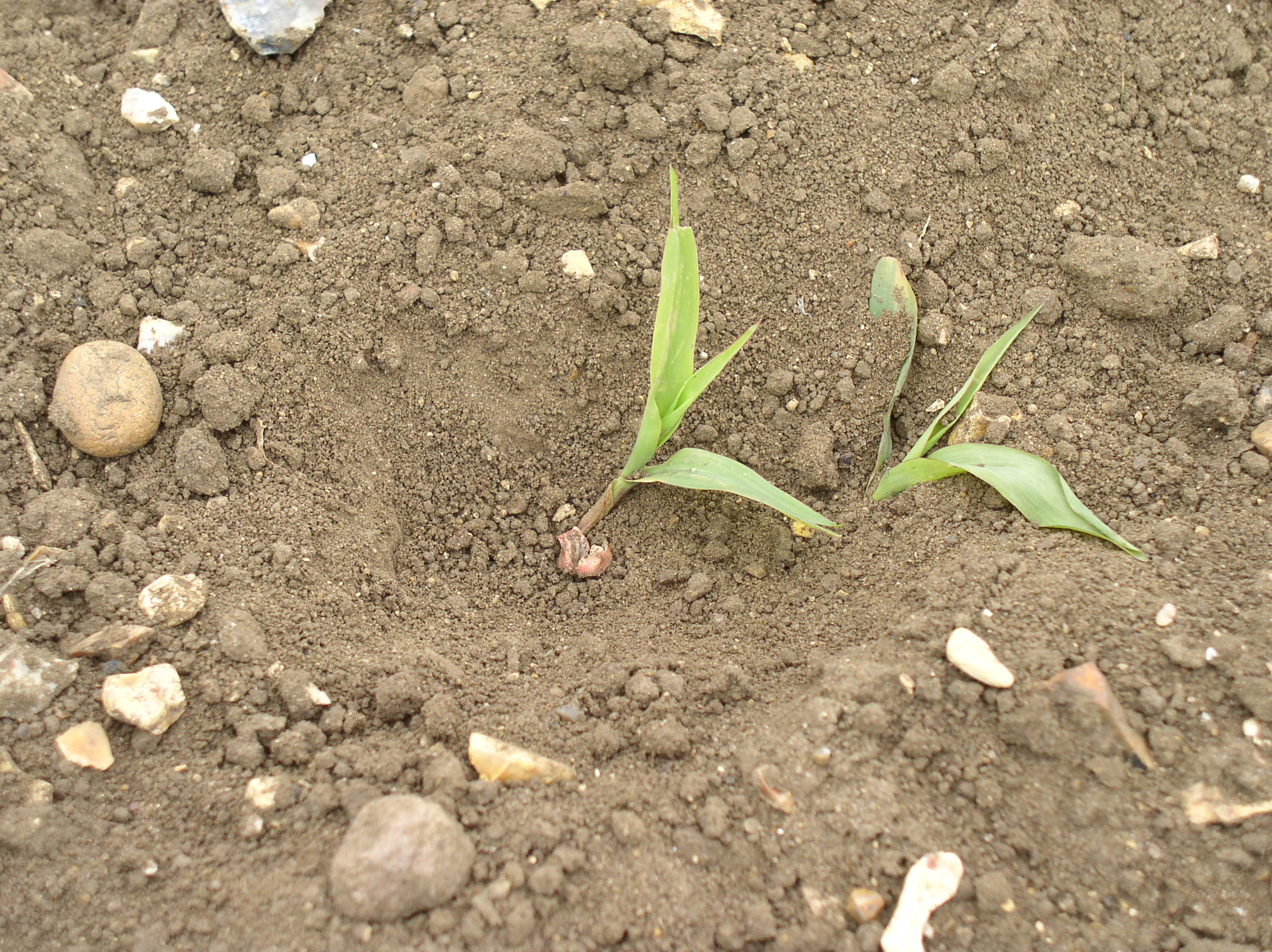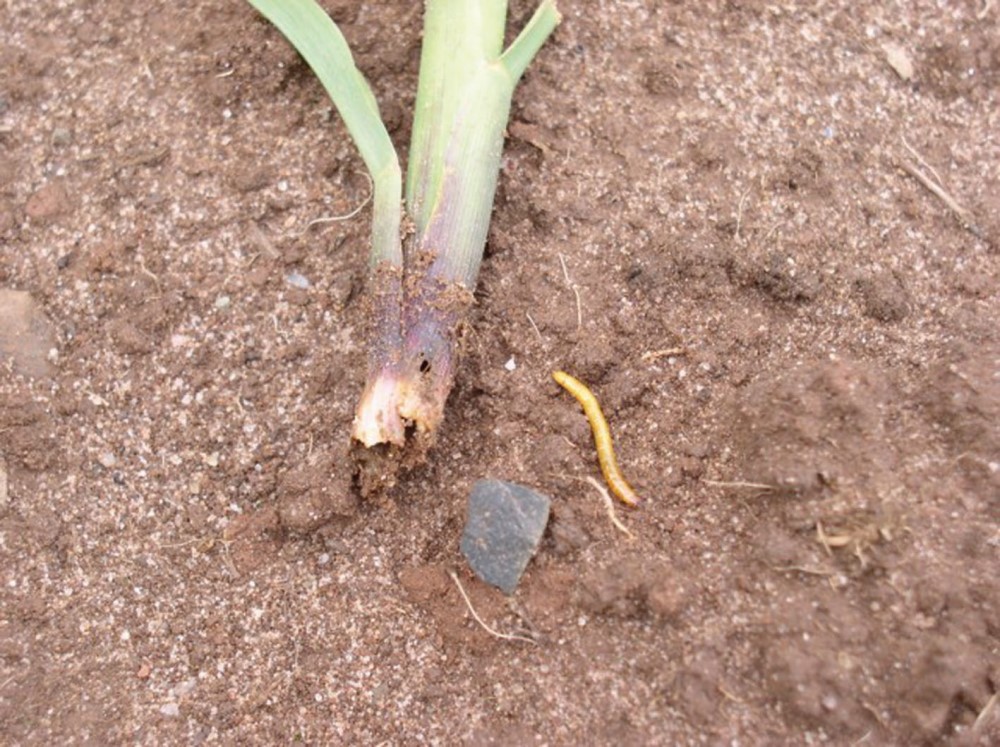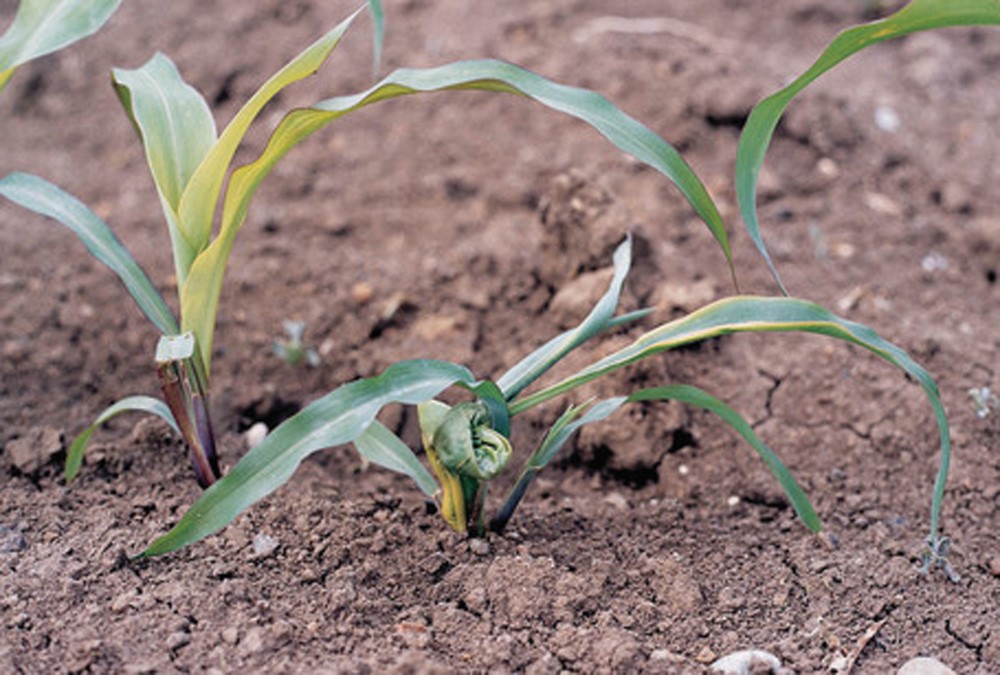- Home
- Knowledge library
- Pest, weed and disease threats to maize
Pest, weed and disease threats to maize
Weed control in the first six weeks after sowing is critical to maize performance, and the most potentially damaging pest and disease to maize are wireworm and maize eyespot. Seek advice from a BASIS-qualified agronomist as to the most appropriate treatment for any crop pest or disease.
Back to: Growing maize for silage
Weed control in maize
Maize seedlings struggle to compete with other plants, such as weeds or volunteers from previous crops. Weed control during the first six weeks after sowing is crucial to killing weeds before they impact crop performance. Competition with weeds for nutrients and moisture is most damaging during the first six weeks post-emergence. Herbicides and inter-row hoeing are the main forms of weed control.
Pre-emergence
Residual herbicides are sprayed onto the drilled seedbed to remove any weeds that germinate alongside the maize. This approach gives the maize a head start.
Post-emergence
Most fields require a second, early post-emergence herbicide spray when the crop has one to three leaves. This tackles the second flush of weeds. Delaying this post-emergence application will reduce the final crop yield.
The benefits of spraying early
A Maize Growers Association (MGA) weed control trial showed that spraying weeds early (within two weeks of crop emergence) resulted in low levels of competition and yields similar to all-season weed control (Figure 2). Leaving weed control to six weeks post-emergence resulted in significant crop yield reductions.
Product choice should be based on the weeds present and those expected to germinate over the coming weeks. Seek advice from a BASIS-qualified adviser and follow best-practice application to protect watercourses and the wider environment. The Voluntary Initiative offers further guidance.
Figure 1. Maize Growers Association trial of weed control timing

Pesticide regulations
From 2014, farmers have had to demonstrate their use of Integrated Pest Management (IPM) with regard to chemical applications. From 26 November 2015, all sprayer operators were required to have the relevant certification to apply pesticides (including those previously exempt due to grandfather rights). From 26 November 2016, all working application equipment must have a National Sprayer Testing Scheme certificate.
Pest threats to maize
|
Pest |
Damage |
Risk factors |
How to minimise the risk |
Control options |
|
Birds |
Crows, in particular, like to feed on maize seeds |
Shallow sowing depth |
Bury seeds well |
Treat seed with bird repellent
Employ traditional bird scaring techniques |
|
Wireworm |
Larvae feed on growing seedlings |
Previously undisturbed grassland
South-facing fields |
Insecticide seed dressing
Allow a substantial break between grassland and maize
Ploughing |
Seed dressing or cultural, e.g., crop rotation |
|
Frit fly |
Second generation maggots eat the young seedlings in May and June |
Predominantly grassland areas |
Leave a ten-week gap between grass and drilling maize |
Seed dressing or cultural, e.g. crop rotation |
Bird damage to a maize crop

Image copyright Bayer CropScience Limited.
Wireworm damage to a maize crop

Image copyright Bayer CropScience Limited.
Frit fly damage to a maize crop

Image copyright Bayer CropScience Limited.
Disease threats to maize
|
Disease |
Damage |
Risk factors |
How to minimise the risk |
Control options |
|
Maize eyespot Kabatiella zeae |
First seen as spotting on the leaf. When the spots are held up to the light, a yellow halo can be seen around each one |
Wet, cool conditions
Non-inversion cultivation techniques, e.g. min-till
Proximity to fields with maize crop residues
Two or more years of maize cultivation |
Plough maize stubble
Drill late into a warm seedbed
Rotate the maize crop with other crops |
Fungicide treatment as soon as the disease is identified, plus second treatment if conditions remain wet/cold
Disease stops at temperatures above 27°C |
|
Fusarium mould |
Mould populations can build in maize and pose a real threat to the following winter cereal |
Repeated maize cropping
Previous wheat cropping
Exposure to crop residues and stubble |
Grow maize in rotation with grass
Do not rotate with wheat
Remove or bury crop residues |
No fungicides available |
Useful links
Download our guide to growing and feeding maize silage
To order a hard copy of the Growing and feeding maize for better returns manual, please contact publications@ahdb.org.uk or call 0247 799 0069.
Topics:
Sectors:
Tags:

